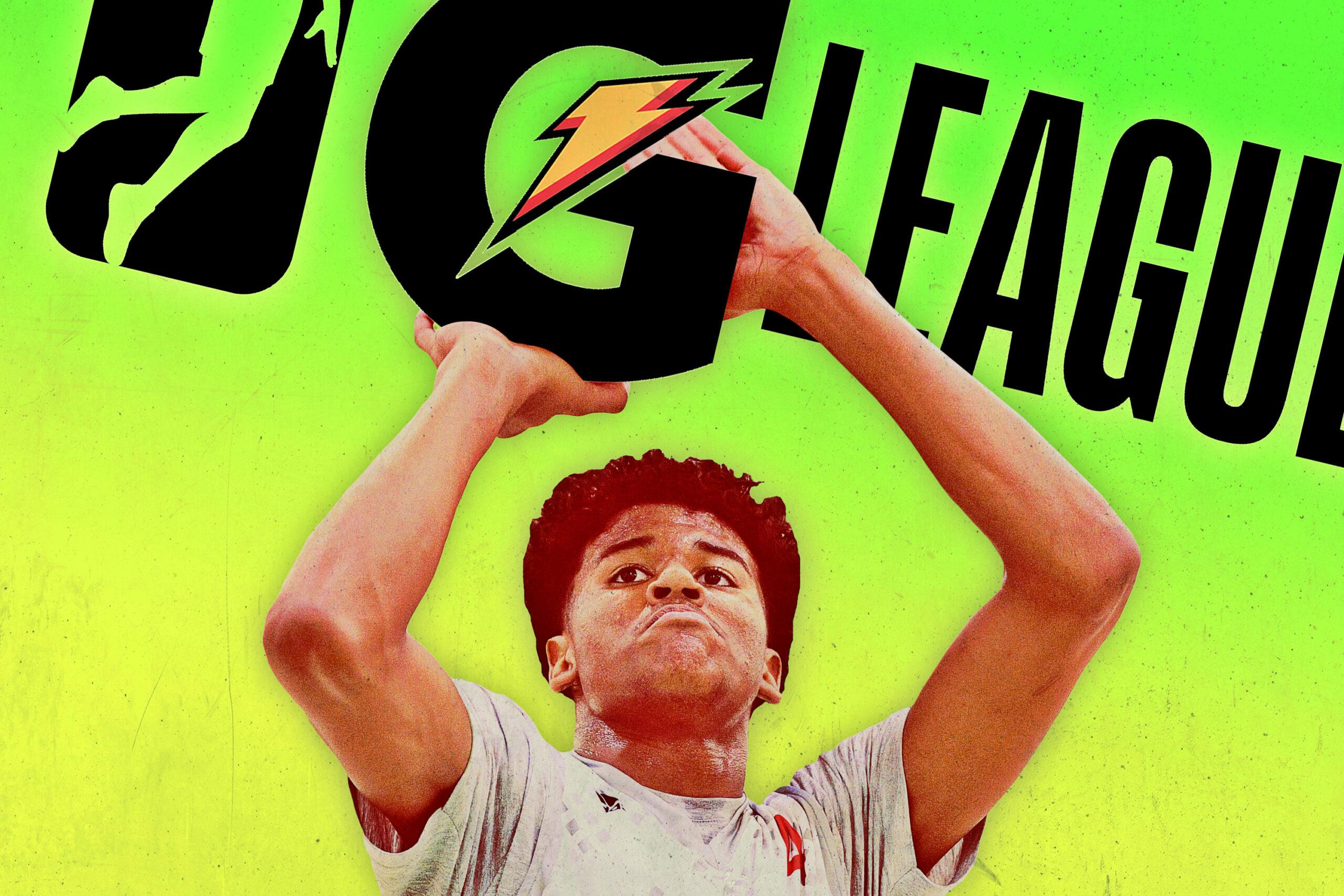
In the midst of figuring out a way to bring its regular season back, the NBA is making moves that could shape the future of basketball. Jalen Green—the no. 1 player in the 2021 class—announced Thursday that he will bypass college in favor of a new path to the NBA: the G League.
Green is punting on offers from some of the top college basketball programs to be the first player in a refurbished G League development program built to prepare top prospects for the NBA and provide a viable alternative to the current system. Prospects will make at least $500,000 a season, and The Athletic’s Shams Charania reported that Green’s “earnings package” could surpass $1 million. ESPN’s Adrian Wojnarowski reported that NBA commissioner Adam Silver became more invested in the program once efforts to abolish the one-and-done rule stalled. Currently, prospects must be a year removed from high school to enter the NBA draft.
While Green will be part of the G League, he will not be playing a full G League season. Development, not winning, is the priority of the program. According to the ESPN report, the program will include oversight from professional coaches and veteran players as well as exhibition games against G League teams, teams from other countries, and NBA academies. Green’s move was quickly followed by a report that five-star prospect Isaiah Todd, who decommitted from Michigan, is expected to join the G League developmental team based in Los Angeles.
One agent told me that while the program is a potential game-changer, staffing will ultimately determine its success. The agent also said it will be far more interesting to see how the initiative affects a player like Todd, who is ranked 13th in his class, rather than Green, who would likely be a top-three pick in next year’s draft no matter what.
For Green, the choice was simple. He has talked about skipping college since 2018 and appears ready to embrace becoming the poster child of what could be a basketball revolution—while making close to seven figures in the process.
It’s difficult to see this move as anything other than a blow to the NCAA. Prospects have circumvented the college system in recent years—LaMelo Ball and RJ Hampton opted for the NBL, based in Australia and New Zealand; Anfernee Simons trained at IMG Academy in the lead-up to the draft as opposed to playing for a college blue blood. But this is a minor-league experiment with the full backing of the NBA. Making overseas-level money while maintaining a domestic presence is something the NCAA, as one college assistant coach put it, “can’t compete with.”
“This has massive implications, and once the first domino goes, it will be easier for the rest to go too,” the college assistant coach told me. They also pointed out that this might make NCAA coaches hesitant to deploy full resources when recruiting players who might be interested in this program. “It is definitely sending a message to the NCAA as a whole.”
The player empowerment wave that started in the NBA is having a cascading effect on the high school ranks, and the NCAA has been slow to adapt. Case in point: The NCAA is expected to vote on a rule that would allow players to transfer without sitting a full year in 2021 and is still debating whether or not to change the bylaws on allowing players to profit off their name, image, and likeness.
Still, for all the benefits this G League plan seems to present to prospects, there’s no guarantee that it will succeed. Pitfalls and questions abound: Will players like Green and Todd fade from the spotlight once college basketball takes center stage? Could a lack of visibility affect their draft stocks? There are developmental concerns, too. How will this G League initiative replicate the team atmosphere? Will it even try to? Should it? Could this create a more individualistic generation of players entering the NBA? Is that necessarily a bad thing?
“This is not the G League … this is the NBA creating their own AAU team to go play their own travel ball schedule,” said the assistant coach. “I don’t blame the kid for taking the money, but a win for the NBA, a win for the G League doesn’t necessarily mean it’s going to be a win for Jalen Green.”
The plan might not be for everyone. Evan Mobley, the no. 2 player in the 2021 class, recently committed to USC, where his father is an assistant coach. Mobley was reportedly offered an “awesome package” by the G League, one similar to Green’s, but he decided to stick with college. It will be fascinating to see the risk/reward calculations made by prospects who aren’t as highly rated.
What this plan does is cut the pretenses from the equation. Most top prospects treat their one college season as a six-month internship in which they play basketball and show up to campus until the season ends (see: Ben Simmons at LSU). It has become obvious that players are only taking a college pit stop because there’s no other viable avenue to the NBA. Now the NBA is trying to create not just an alternate path (that doesn’t involve leaving the country), but a better one, too. Instead of what feels like an internship with a side of homework, this is a paid internship that better prepares you for the job waiting on the other side.